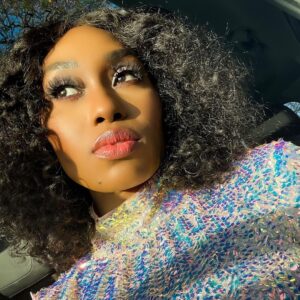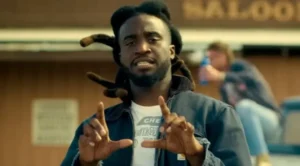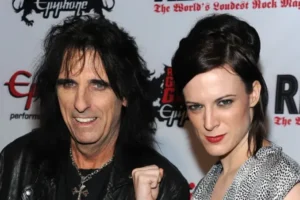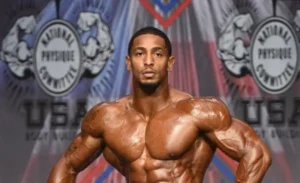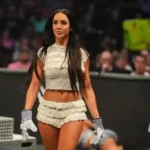India Love is of African-American and Puerto Rican descent. She is a model, social media star, and reality TV personality.
India Love, born India Westbrooks, has captivated audiences with her striking looks and vibrant personality. She gained fame through her social media presence and appearance on the reality TV show “The Westbrooks. ” Her mixed African-American and Puerto Rican heritage adds to her unique appeal.
India Love’s career spans modeling, music, and social media influence. She continues to grow her brand and connect with her diverse fan base. Her ethnicity and cultural background play a significant role in her identity and public persona. India’s journey in the entertainment industry inspires many aspiring influencers and models.
Also Read
India Love Wiki/Bio
| Category | Details |
|---|---|
| Full Name | India Westbrooks |
| Nick Name | India Love |
| Date of Birth | February 3, 1996 |
| Age | 28 years old (as of 2024) |
| Birthplace | Compton, California, USA |
| Nationality | American |
| Ethnicity | African-American |
| Zodiac Sign | Aquarius |
| Religion | Christianity |
| Profession | Model, Social Media Influencer, TV Personality, Rapper |
| Years Active | 2015 – Present |
| Father | Warren Westbrooks |
| Mother | Candy Westbrooks |
| Siblings | Four sisters (Brooke, Crystal, Morgan, Bree Westbrooks), one brother (Blake) |
| Marital Status | Single |
| Children | None |
| Career Start | India Love rose to fame through her Tumblr account, which led to success on Instagram. |
| Reality TV | Starred in the BET reality TV series “The Westbrooks” (2015) with her family. |
| Music | Pursued a music career, releasing singles like “Loco” and collaborating with major artists. |
| Modeling | India has modeled for several brands, including Fashion Nova and PrettyLittleThing. |
| Social Media Influence | She has millions of followers on platforms like Instagram, promoting fashion and lifestyle. |
| Rap Career | In recent years, she has focused on her music, releasing songs and performing. |
| Net Worth | $1.5 million (2024) |
| Monthly Income | $10,000 to $20,000 (approx.) |
| Annual Income | $150,000 to $250,000 (approx.) |
| Sources of Income | Social media endorsements, modeling, music, brand deals |
| Height | 5 ft 3 in (160 cm) |
| Weight | 56 kg (123 lbs) |
| Body Type | Curvy, Slim |
| Eye Color | Dark Brown |
| Hair Color | Black (often changes to blonde or other shades) |
| Body Measurements | 37-25-37 inches (94-63.5-94 cm) |
| Shoe Size | 7 (US) |
| Relationship Status | Single (as of 2024) |
| Past Relationships | Linked to rappers like The Game, Lil Yachty, and Sheck Wes |
| Sexual Orientation | Straight |
The Melting Pot Of Cultures
India is a fascinating blend of various cultures, languages, and traditions. This diversity makes it a unique melting pot. The rich tapestry of Indian ethnicity is woven with threads from different regions and times. Each state has its distinct flavor, but they create a beautiful mosaic together.
Historical Influences
India’s history is a vast tapestry of different rulers and empires. The Aryans and Dravidians are among the earliest settlers. They brought their customs and languages. The Maurya and Gupta Empires added their cultural elements. The Mughals introduced Persian art and architecture. The British brought Western education and governance systems.
| Period | Influence |
| Aryan | Vedic traditions, Sanskrit language |
| Dravidian | Temple architecture, Dravidian languages |
| Maurya | Buddhist art, Ashokan pillars |
| Mughal | Miniature paintings, Mughal cuisine |
| British | English language, Cricket |
Modern Day Fusion
Today’s India is a blend of ancient and modern influences. Traditional festivals like Diwali and Holi are celebrated with modern twists. Bollywood movies mix Indian stories with Western styles. Indian cuisine now includes global flavors. Popular dishes include butter chicken and pasta.
- Fashion: Fusion of traditional sarees with modern cuts
- Music: Mix of classical ragas with pop and rap
- Technology: Ancient wisdom in modern health apps
Indian cities are perfect examples of this fusion. Mumbai is a hub of Bollywood and business. Delhi showcases ancient monuments and modern malls. Bangalore is known for its tech industry and traditional music.
India’s melting pot of cultures creates a vibrant and dynamic society. The rich history and modern fusion make it a unique destination.
Language Diversity
India is a land of many languages. Over 1,600 languages are spoken here, making it a linguist’s paradise. People in different regions speak different languages, creating a unique cultural tapestry.
Regional Dialects
Each state in India has its own language. For example, Hindi is spoken in the north, Tamil is spoken in the south, and each region has many dialects.
| State | Main Language | Popular Dialects |
| Uttar Pradesh | Hindi | Bhojpuri, Awadhi |
| Tamil Nadu | Tamil | Kongu Tamil, Madurai Tamil |
| West Bengal | Bengali | Rarhi, Varendri |
Linguistic Heritage
India has a rich linguistic heritage. Ancient languages like Sanskrit and Prakrit were once widely spoken, and they have influenced modern Indian languages.
Many Indian languages have their scripts. For example, Hindi uses the Devanagari script, and Bengali has its own script as well. This diversity in scripts adds to India’s cultural richness.
Religious Pluralism
India is a land of many religions. People from different faiths live together, creating a rich and diverse culture and a vibrant and unique spiritual landscape.
Major Religions
India is home to many major religions. Here are the most prominent ones:
- Hinduism: The oldest religion in India. It has many gods and goddesses.
- Islam: The second-largest religion in India. Followers are called Muslims.
- Christianity: Introduced by missionaries. It has a significant following.
- Sikhism: Originated in Punjab. It promotes equality and justice.
- Buddhism: Founded by Siddhartha Gautama. It teaches peace and enlightenment.
- Jainism: Focuses on non-violence and self-discipline.
Festivals And Traditions
Festivals in India are colorful and joyful. They reflect the country’s religious diversity:
| Festival | Religion | Tradition |
| Diwali | Hinduism | Festival of Lights, celebrating good over evil. |
| Eid | Islam | Marks the end of Ramadan, a month of fasting. |
| Christmas | Christianity | Celebrates the birth of Jesus Christ. |
| Vaisakhi | Sikhism | Celebrates the harvest and the formation of Khalsa. |
| Buddha Purnima | Buddhism | Commemorates the birth, enlightenment, and death of Buddha. |
| Mahavir Jayanti | Jainism | Celebrates the birth of Mahavira, the last Tirthankara. |
These festivals bring people together and promote unity and mutual respect. Each festival has unique traditions and customs, and they showcase India’s rich cultural heritage.
Cuisine Varieties
India’s cuisine is rich and diverse. Different regions offer unique flavors. From spicy to sweet, every dish tells a story. Let’s explore the variety of Indian cuisines.
Regional Specialties
India has many regions, each with its food style.
| Region | Specialty |
| North India | Butter chicken, Naan, Chole Bhature |
| South India | Dosa, Idli, Sambar |
| East India | Rasgulla, Momos, Fish Curry |
| West India | Pav Bhaji, Dhokla, Vada Pav |
Each region uses local spices and ingredients, creating unique dishes. North Indian food is rich and creamy, South Indian food is light and spicy, East Indian food is often sweet, and West Indian food is a mix of flavors.
Fusion Food Trends
Fusion food combines different cuisines. It is popular in India. Chefs mix traditional dishes with global flavors.
- Butter Chicken Pizza: Combines Italian pizza with Indian butter chicken.
- Paneer Tacos: Mexican tacos with Indian paneer filling.
- Masala Pasta: Italian pasta with Indian spices.
Fusion food is fun and creative. It brings new tastes to traditional dishes, and people love trying new food. Fusion dishes are often colorful and tasty.
Art And Craft
India is a land rich with artistic heritage. The country’s arts and crafts reflect its diverse cultures; each region has unique styles and techniques. From traditional crafts to contemporary art, India offers a vibrant tapestry of creativity.
Traditional Crafts
Traditional crafts in India have deep-rooted historical significance. Artists use natural materials like clay, wood, and textiles, and these crafts are often passed down through generations. Each craft tells a story of the region’s culture.
Some famous traditional crafts include:
- Pottery: Known for its intricate designs and vibrant colors.
- Textiles: Includes famous weaving styles like Banarasi and Kanjeevaram.
- Woodwork: Carved wooden furniture and decorative items are popular.
- Jewelry: Traditional jewelry made with gold, silver, and precious stones.
The detailed craftsmanship in these arts is awe-inspiring. Artisans spend years perfecting their skills.
Contemporary Art
Contemporary art in India is flourishing. Modern artists experiment with new styles and mediums, blending traditional elements with modern techniques, creating a unique fusion of old and new.
Key features of contemporary Indian art include:
- Abstract Art: Uses shapes, colors, and forms to create non-representational works.
- Mixed Media: Combines materials like paint, fabric, and digital elements.
- Installation Art: Large-scale, immersive works that engage the viewer.
- Digital Art: Art created using digital technology, like graphic design and animation.
Contemporary artists often address social and political themes. Their work challenges the viewer’s perspective.
Music And Dance
India’s music and dance are rich in diversity and tradition. These art forms reflect the country’s cultural heritage and tell stories of its people. They are an essential part of India’s identity, shaping its history and future.
Classical Forms
Classical music and dance in India have a long history. They follow strict rules and are passed down through generations. Each region has its unique style, adding to the country’s cultural diversity.
Bharatanatyam, Kathak, and Odissi are popular classical dances. These dances use precise movements and expressions. They often tell stories from ancient texts.
| Dance Form | Region | Key Features |
| Bharatanatyam | Tamil Nadu | Graceful movements, storytelling |
| Kathak | North India | Footwork, spins, facial expressions |
| Odissi | Odisha | Fluid movements, sculpturesque poses |
Classical music includes genres like Hindustani and Carnatic. These styles use ragas and talas to create intricate melodies. Instruments like the sitar, tabla, and veena are commonly used.
Modern Expressions
Modern Indian music and dance blend traditional and contemporary elements. Bollywood dance is a popular example. It combines classical moves with modern beats.
Pop music and hip-hop have also influenced Indian dance. These styles appeal to young people. They bring fresh energy to the art forms.
- Bollywood: Mixes classical and modern dance.
- Pop: Features catchy tunes and lively beats.
- Hip-Hop: Adds street-style moves and rhythms.
Modern Indian music includes genres like indie rock and electronic dance music (EDM). These styles attract a global audience. They showcase India’s evolving musical landscape.
India’s music and dance continue to evolve. They honor tradition while embracing innovation, making Indian culture vibrant and dynamic.
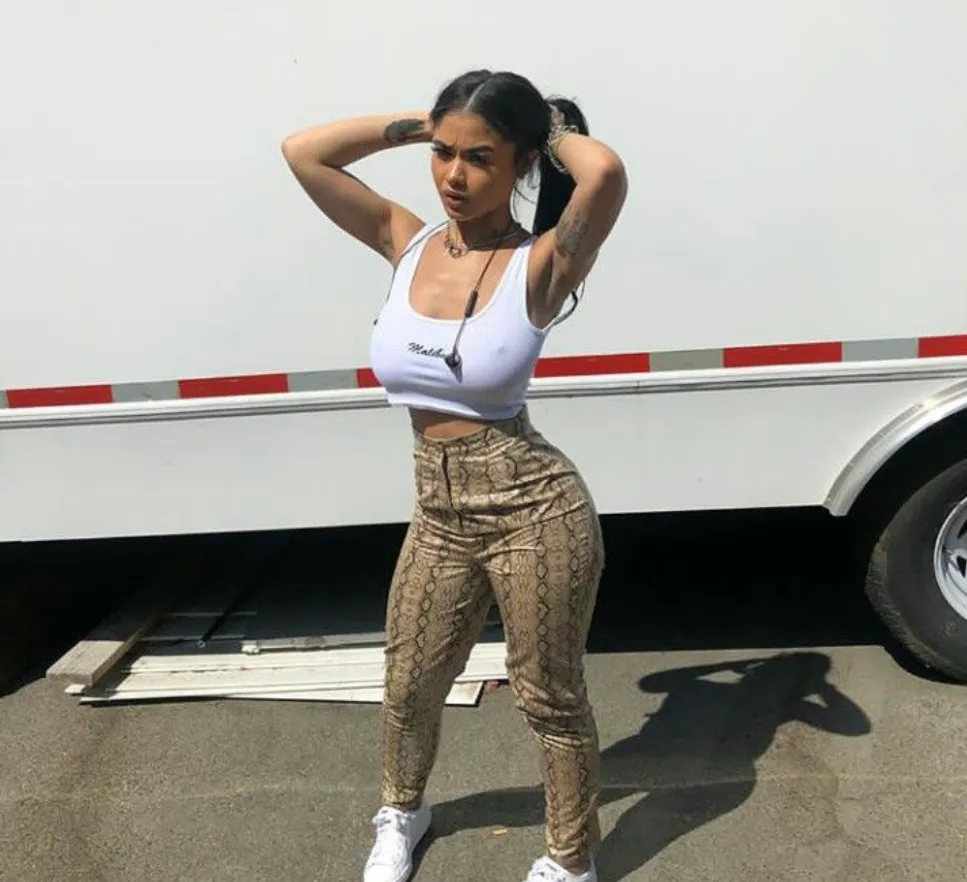
Traditional Attire
India’s traditional attire showcases its rich cultural heritage. Each region has unique clothing styles that reflect the local culture and history. Traditional attire in India is colorful and intricate.
Regional Clothing
India has diverse regional clothing styles. Each state has its unique dress. Here are some examples:
| Region | Traditional Attire |
| Punjab | Phulkari and Turban |
| Rajasthan | Ghagra Choli and Pagri |
| Kerala | Mundu and Kasavu Saree |
| West Bengal | Dhoti and Baluchari Saree |
Fashion Evolution
Indian fashion has evolved over the years. Traditional attire has blended with modern styles. This blend creates a unique fashion statement. Here are some key changes:
- Fusion Wear: Combining traditional and modern elements.
- Sustainable Fashion: Using eco-friendly materials.
- Global Influence: Incorporating global fashion trends.
Fashion in India is ever-changing. Yet, it stays rooted in tradition.
Celebrating Diversity
India’s beauty lies in its diversity. This country is a melting pot of various cultures, languages, and traditions, and its festivals celebrate this diversity.
National Festivals
India celebrates many national festivals that bring people together.
- Diwali: Known as the Festival of Lights, Diwali is celebrated across India. People light lamps and burst fireworks.
- Holi: The Festival of Colors, Holi, involves throwing colored powders and water. It signifies the victory of good over evil.
- Independence Day: Celebrated on August 15th, this day marks India’s freedom from British rule. Patriotic songs and parades are common.
Local Celebrations
Local celebrations add unique flavors to Indian culture. Each region has its special festivals.
- Pongal: Tamil Nadu celebrates Pongal in January. It is a harvest festival where people cook sweet rice.
- Bihu: Assam celebrates Bihu three times a year. It marks the Assamese New Year and includes traditional dances.
- Onam: Kerala celebrates Onam with boat races and flower arrangements. It honors the homecoming of King Mahabali.
India’s festivals show its rich heritage. They teach us to value and celebrate differences.
Social Media Profile
Conclusion
India’s love for its diverse ethnicity is a testament to its rich cultural heritage. Celebrating unity in diversity, India’s myriad traditions and customs create a vibrant tapestry of life. Embracing this multicultural ethos fosters harmony and enriches our global understanding.
Also Read About: Stunna girl ethnicity


